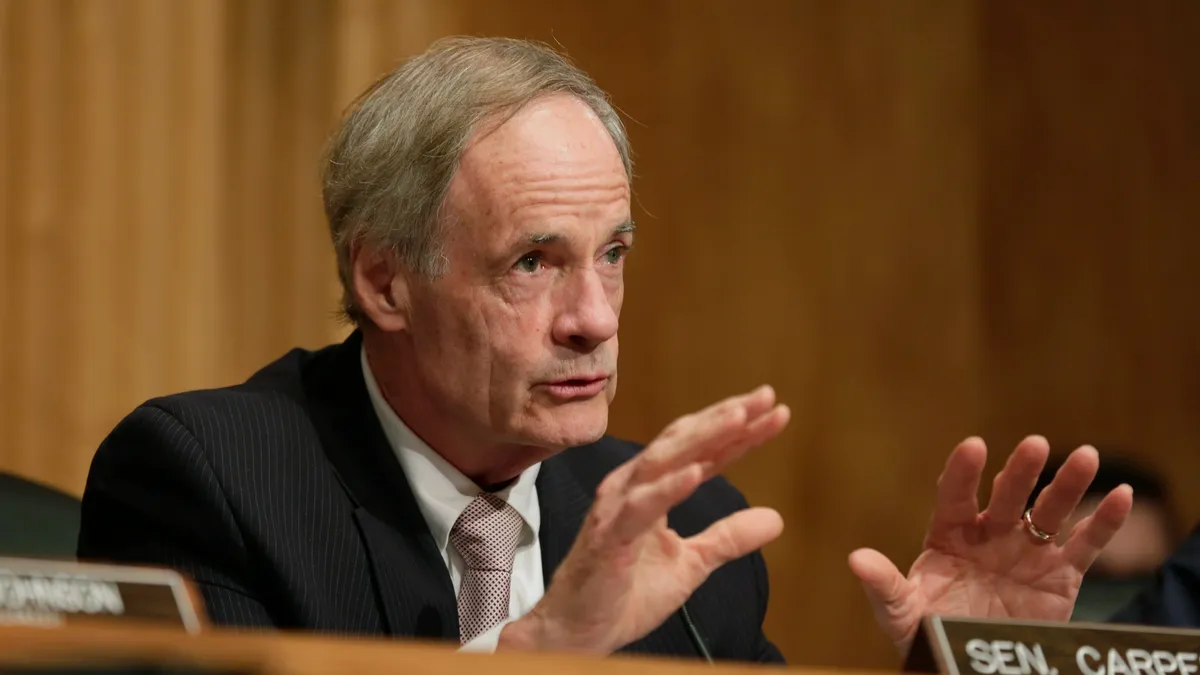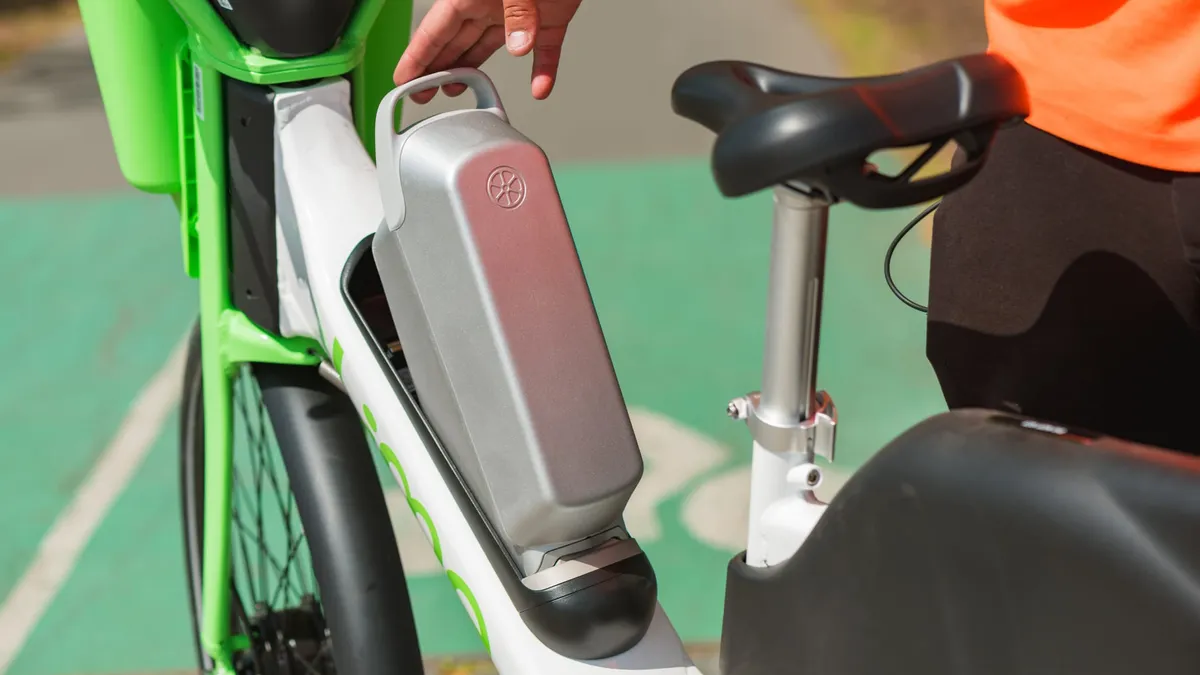Communities throughout the U.S. are getting boost to recycling infrastructure and education improvements due to recent U.S. EPA funding. Speakers at a Senate hearing last week urged lawmakers to use that momentum to support more long-term efforts to raise recycling rates.
Speakers who testified at a Senate Environment and Public Works Committee hearing May 22 applauded recent projects funded by the U.S. EPA’s Solid Waste Infrastructure for Recycling grants, a total of $275 million in funding over five years funded by the 2021 bipartisan infrastructure law. An additional $75 million is going into recycling education and outreach programs.
Speakers also urged lawmakers to pass two bipartisan federal bills sponsored by committee chair Sen. Tom Carper, D-Del., and ranking member Sen. Shelley Moore Capito, R-W.Va. The bills passed the Senate in March and now await action in the House.
The Recycling Infrastructure and Accessibility Act aims to create a recycling infrastructure pilot program to make services more accessible to rural and disadvantaged communities. The Recycling and Composting Accountability Act calls for the collection of more types of national recycling and composting data and considers the feasibility of implementing a national composting strategy.
“For the life of me, I cannot believe that we can’t get these bills over the finish line,” Capito said during the hearing, expressing frustration that the pair of bills was first introduced during a prior session of Congress in 2022 and have not passed despite bipartisan support. “They are quite simple and just a very beginning step, but we are going to keep trying.”
Susan Fife-Ferris, director of solid waste planning and program management for Seattle Public Utilities, said the agency supports both bills as vehicles for better federal management of recycling systems and data.
The government can play “a critical role by supporting consistent and accurate data collection at a national level and using this data to drive effective programs and investments in the solid waste field,” she said. “Seattle has collected data and used data to inform our management of solid waste for over 30 years, and we know how important and foundational it is.”
While work continues to pass the bills, Carper called on nonprofits, private sector players and lawmakers to all collaborate more closely on additional recycling improvements.
“I believe that we should seize the opportunity in front of us to create a circular economy that protects our planet, strengthens our communities, and creates jobs. We must do so by collaborating across all levels of government,” he said.
Speakers discussed how SWIFR projects have helped them build partnerships and leverage resources. Fife-Ferris highlighted Seattle’s plan to use SWIFR funds to build a salvage lumber warehouse to increase the amount of lumber that can be reclaimed and reused from old buildings. The city hopes to use the funding to attract a private business to operate the yard.
“Our city still faces challenges and has limited control or influence over the large and complex solid waste system. This is why leadership at the national level is so important to help eliminate waste and create a truly circular economy,” she said. Fife-Ferris also called for SWIFR funding to be made available past the FY 2026 deadline in order to provide more cities access to seed money for major projects.
Elizabeth Biser, secretary of North Carolina’s Department of Environmental Quality, also encouraged Congress to continue to invest in recycling efforts she sees as critical to “support the infrastructure, education, and end markets needed to move towards a true circular economy.”
Biser highlighted how North Carolina will use about $600,000 in SWIFR funding to conduct a statewide waste characterization study, create market assessments for key recycled materials, conduct a gap analysis for MRFs, and examine how a possible hub-and-spoke model could help improve recycling access in the rural parts of the state.
The work will “enable us to make smart and strategic decisions about where to invest resources, where we can get the maximum return on investment,” she said.
Cody Marshall, chief system optimization officer for The Recycling Partnership, highlighted how the group assisted officials in New Orleans to develop their SWIFR proposal, resulting in funding to provide curbside recycling service to 150,000 single family homes. TRP’s funding partners include numerous major brands.
That SWIFR funding also “unlocked additional funding from the partnership, made possible from private sector dollars, he said. “The public-private partnership will ensure the SWIFR funding is an enduring investment providing new materials for years to come.”
Capito said other grant recipients can leverage their SWIFR funding into powerful investments or zero-interest loans, which “helps to reduce risk and attract private sector investments into emerging technologies and infrastructure.” Capito cautioned that federal grant funds are “not a magic bullet solution, but are one tool that can help spur private sector investment to build that collection infrastructure.”
Biser said that’s already happening on a smaller scale in North Carolina, where Clear Path Recycling in North Carolina leveraged $140,000 in state grants to attract a $1.7 million private investment, adding 90 jobs to that facility.
Marshall echoed calls for Congress to continue SWIFR funding, adding that TRP and other organizations have already found ways to grow that funding into longer-term projects by connecting with private businesses that see recycling as both an economic driver and environmental necessity.
“I think we are a great example of how the private sector is stepping up,” he said.






















